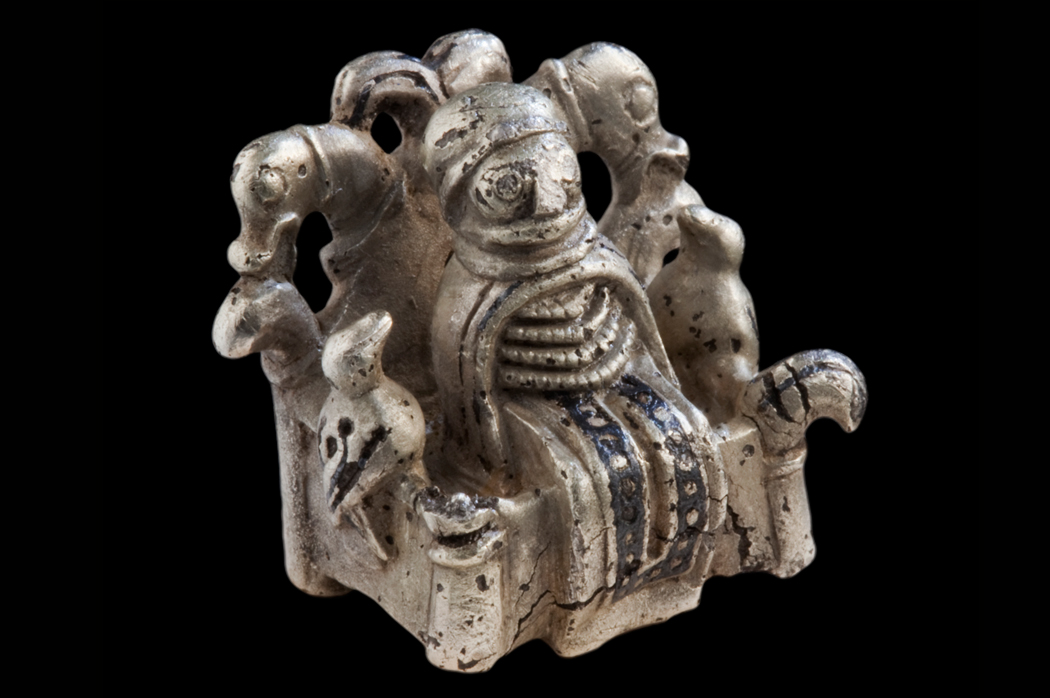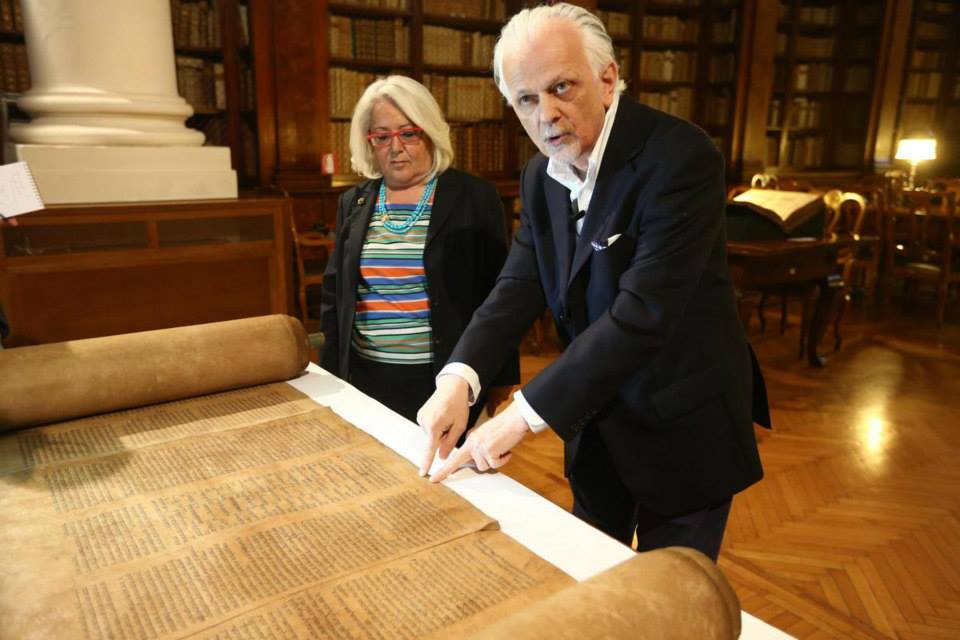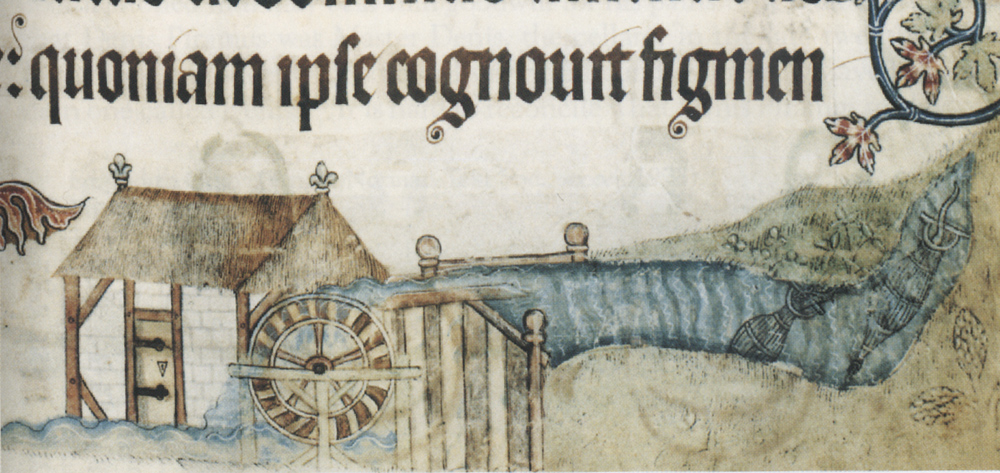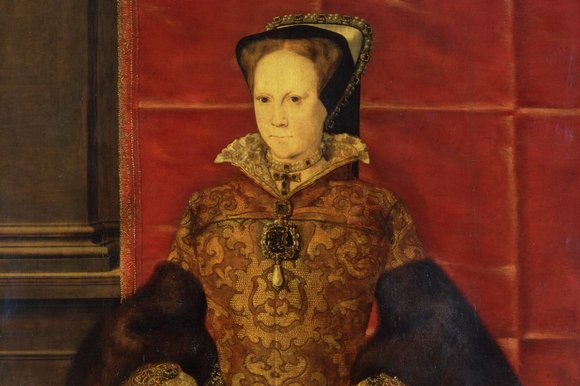NEW RESEARCH: Odin from Lejre as challenger of hegemonic orders...


NEW RESEARCH: Odin from Lejre as challenger of hegemonic orders...

ABSTRACT:
Although the ‘chronicle of chronicles’ compiled at Worcester c.1095–c.1140 is now firmly attributed to John of Worcester, rather than the monk Florence, major questions remain. A central issue is that the semi-autograph manuscript of the chronicle (now Oxford, Corpus Christi College, MS 157) underwent several alterations to its structure and contents, as codicological evidence demonstrates. These included the incorporation of important illuminations, which have been surprisingly little considered in their overall manuscript context. This article focuses on these illuminations, and will argue that their presence in this version of the chronicle makes it something even more distinctive than the learned, revisionist chronological work of Marianus Scotus upon which it was based. John of Worcester’s chosen images are linked not only to his political narrative but also to theological works and to cutting-edge science, newly translated from Arabic. The presence of such miniatures in a twelfth-century chronicle is unique, and they are central to the final form given to the Worcester chronicle by John of Worcester himself in this key manuscript. Their analysis thus brings into focus the impressive assembly of materials which the chronicle offered to readers, to shape their understanding of on-going events.
ABOUT THE AUTHOR:
Anne E. Lawrence-Mathers, History, University of Reading, Whiteknights, Reading, Berkshire, RG6 6AA , United Kingdom
SOURCE:
John of Worcester and the science of history
By Anne E. Lawrence-Mathers
Journal of Medieval History
Published online: 13 May 2013
DOI:10.1080/03044181.2013.798742

ABSTRACT
Convergence among religious rites has long been a favoured subject of study among historians of the Latin East, who have come at it from a variety of different angles, exploiting a wide array of evidence ranging from papal correspondence to works of art. At the level of popular devotion to saints and relics, research has focused on Latin piety expressed towards local Christian cults, relics and pilgrimage sites mainly in the Holy Land and Cyprus. However, the reverse – the devotion Greeks and other Eastern Christians exhibited towards cults and relics of Latin provenance – has been but little explored. This paper examines non-Latin reactions to the emergence of two ‘indigenous’ Latin cults in fourteenth-century Cyprus, those of the Carmelite Peter Thomae and Count John of Montfort. It will be argued that the cults evolved through time in response to the expectations and needs of a ‘Cypriot’ urban public, comprised of both Latins and Greeks of a high social standing.
ABOUT THE AUTHOR:
Michalis Olympiosa, Department of History and Archaeology, University of Cyprus, 75, Kallipoleos Avenue, CY-1678, Nicosia, Cyprus
SOURCE:
Shared devotions: non-Latin responses to Latin sainthood in late medieval Cyprus
Michalis Olympiosa
Journal of Medieval History: Published online: 16 May 2013
Routledge
DOI:10.1080/03044181.2013.795499

ABSTRACT:
The relationship between conquerors and conquered in the Latin Empire of Constantinople has traditionally been understood as a relentlessly hostile one, particularly on the religious level. Whatever its merits, the dominance of this view has sometimes resulted in the gross misinterpretation of important pieces of evidence. This article examines two unusual liturgical texts that were treated by their discoverers as products of a Latin campaign of liturgical proselytism. The texts themselves are bilingual presentations of the Western rite of mass, with Greek and Latin text presented in an interlinear format. Most unusually, the Latin text is written in Greek characters. This article makes the case, due to internal evidence as well as the broader context of ecclesiastical relations in the Latin Empire, that these texts were created by Greek clerics rather than by Latin authorities, and that their purpose was entirely different from that imagined by their discoverers.
ABOUT THE AUTHOR:
Brendan J. McGuire, Department of History , Christendom College , 134 Christendom Drive, Front Royal, Virginia, USA
SOURCE:
Evidence for religious accommodation in Latin Constantinople: a new approach to bilingual liturgical texts
By Brendan J. McGuire
Journal of Medieval History: Published online: 22 May 2013
DOI:10.1080/03044181.2013.798832

ABSTRACT:
The Prester John myth of a rich and powerful Christian saviour-sovereign beyond the Muslim Middle East was enmeshed for centuries in the desire for a revival of the crusading cause. This article examines a later phase when the legend shifted to Africa, the significance of which has not been wholly appreciated, nor the ensuing contacts between continents fully elaborated. Embassies between Ethiopia and Christian potentates of the Mediterranean – in Aragon, Portugal, Italy and Burgundy – were perceived as exchanges with the Prester. Steps were taken by both sides in the hopes of building a powerful alliance against Islam. Europe gained new information on sub-Saharan Africa and found its racial paradigm challenged. Yet reality could not match all that was imaginatively imposed on Christian Ethiopia, as gradually reflected in historical narratives and literature from the late fifteenth century. The strength of the myth and its impact on global events is nonetheless extraordinary.
ABOUT THE AUTHOR
Andrew Kurt, Department of History, Georgia State University, Atlanta, Georgia, United States of America. Currently Dr. Kurt is investigating the many contacts between European and Ethiopian rulers in the 14th to 16th centuries aimed primarily at a Crusade against Muslim states in the Red Sea region. He hopes his examination of Muslim sources and Christian sources (Italian, Spanish, Portuguese, and Ethiopian) will help him to create a narrative of the multi-faceted relations between peoples of different continents at a time of continuing discovery. In May of 2009 he delivered a paper titled “Mapping Prester John as African (1350-1600): the Italian, Spanish, and Portuguese Perspectives,” at the International Medieval Congress at Western Michigan University. In October 2012 he gave a paper at the Southeast Regional Middle East and Islamic Studies Seminar titled “Between Holy War and Symbiosis: the Delicate Balance of Late Medieval Ethiopia, the Neighboring Sultanates, and Mamluk Egypt.” Both are being expanded as articles
SOURCE:
The search for Prester John, a projected crusade and the eroding prestige of Ethiopian kings, c.1200–c.1540
By Andrew Kurt
In Journal of Medieval History: Published online: 22 Apr 2013
Routledge
DOI:10.1080/03044181.2013.789978

NEW RESEARCH: Uncovering the ‘saintly Anchoress’ and the myths of Medieval anchoritism...

Anne of Bretagne died at Blois in 1514. Her funeral was exceptionally extravagant...
More than 30 years after it was raised from the seabed - and almost 500 years since it sank - the secrets of Henry VIII's flagship, the Mary Rose, are being revealed to the public in a brand new £35 mill museum

World’s oldest complete Torah from around 1150 discovered in Bologna...

Letter from Robert the Bruce to Edward the Hammer of Scots from 1310 found at British Library...

The Eucharist in Medieval Life and Art is on view at New York's The Morgan Library & Museum...

New research: Water landscapes on the River Thames from the Middle Ages until the 19th century…

Jeanne d’Arc was burned at the stake in Rouen in May 1431. But what did the city look and feel like?

Treasures of the Royal Courts of the Tudors, Stuarts and the Russian Tsars shown at V&A…

In Fine Style shows the art of Tudor and Stuart Fashion at Buckingham Palace this summer...


Between 1526 and 1539 an outstanding pearl entered the jewellery collection of the Empress Isabella of Portugal (1503-1539). Either it was a diplomatic gift or the Empress purchased it. When she died in 1539 the pearl was inherited by her daughter, Juana of Austria (1535-1573). Following a short marriage to Prince John of Portugal (1537 – 1554), Juana returned to Spain to assume regency for her brother, Philip II. Thus the pearl became part of Philip’s dowry for his new bride, Mary Tudor (1516-1558), after whom the pearl has been christened.
It is an outstanding asymmetrical drop-shaped pearl that was much admired by the Tudor courts and is featured in at least three Royal portraits of Mary Tudor, namely one by Anthonis Mor currently at the Prado, one by Hans Eworth in the National Portrait Gallery and a third owned by owned by the Society of Antiquaries.
Since the pearl’s disappearance in the late 16th century the pearls depicted in these portraits have – it is claimed now – mistakenly been identified as La Peregrina, a different pearl which is 53.57 grains smaller than the Mary Tudor pearl. However, Mary Tudor could never have worn the Peregrina as it was first recorded in 1579, 21 years after her death. However, in 2004 – what is presumed to be the real Tudor Pearl -surfaced at an auction and was bought by the select Jewellers Symbolic & Chase . This year it will be exhibited at the Antiques fair, Masterpiece London. The fair will take place from 27 June – 3 July 2012 (with a Preview on Wednesday 26 June) in the South Grounds of The Royal Hospital Chelsea, London SW3. The exhibition of the pearl is accompanied by a certificate from the Swiss Gemmological Institute stating that the pear weighs 64.5 carats (258.12 grains) and measures 16.50 -17.80 x 31.95 mm and is of natural saltwater origin. The Mary Tudor Pearl is the third largest well-formed pearl documented today.

Following its debut at Masterpiece London, the Tudor Pearl will be exhibited at the V&A as part of the Pearls exhibition, which will run from 21st September 2013 to 19th January 2014.

Continuing with the Queen Mary I theme, Philip Mould will be exhibiting a recently discovered English School portrait of Queen Mary I at the Fair. In the presentation of the portrait at his website it says that the new portrait is taken from the “larger portrait by Antonis Mor” in Prado. Curiously enough, however, Mary Tudor in the new portrait is not showing off her pearl but another magnificent jewel with three pearls hanging on her neck.
Provenance
Whether or not the “new” pearl is in fact the one presented to Queen Mary or whether – as is generally believed – it was the peregrina awaits to be seen. For one thing, Symbolic and Chase has not so-far published anything about the provenance apart from the tidbit, that it surfaced on an auction in 2004. As opposed to this the provenance of the Peregrina is well documented. After the death of Mary Tudor the pearl reverted to Spain and became part of the Spanish Crown Jewels, as is documented by a number of later paintings of Spanish Queens. Later, when Napoleons brother left Spain in 1813 he brought the peregrina with him. His nephew, the later emperor Napoleon III, sold it during his English exile to the Hamiltons, who put it up for sale at Sotheby’s in 1969, where Richard Burton bought it for Liz Taylor.